Mushrooms are fascinating organisms that have been valued for their culinary, medicinal, and spiritual uses for thousands of years. They come in various shapes, sizes, colors, and flavors, and offer a range of benefits and risks to those who consume them. Whether you are a gourmet, a healer, or an adventurer, mushrooms can provide you with a unique and rewarding experience.
But where can you find these marvelous mushrooms? If you live in or visit Oklahoma, you are in luck. Oklahoma is home to a diverse and abundant mushroom population, thanks to its varied climate and terrain. From forests to fields, from parks to gardens, you can encounter many different kinds of mushrooms in Oklahoma, such as edible, poisonous, medicinal, and psychedelic.
Lets discover the wonderful world of mushrooms in Oklahoma. We will introduce you to the types of mushrooms that grow in Oklahoma, the best places and times to find them, and the safety and ethics of mushroom foraging. By the end of this article, you will have a better understanding and appreciation of the mushrooms in Oklahoma, and how to enjoy them responsibly and respectfully.
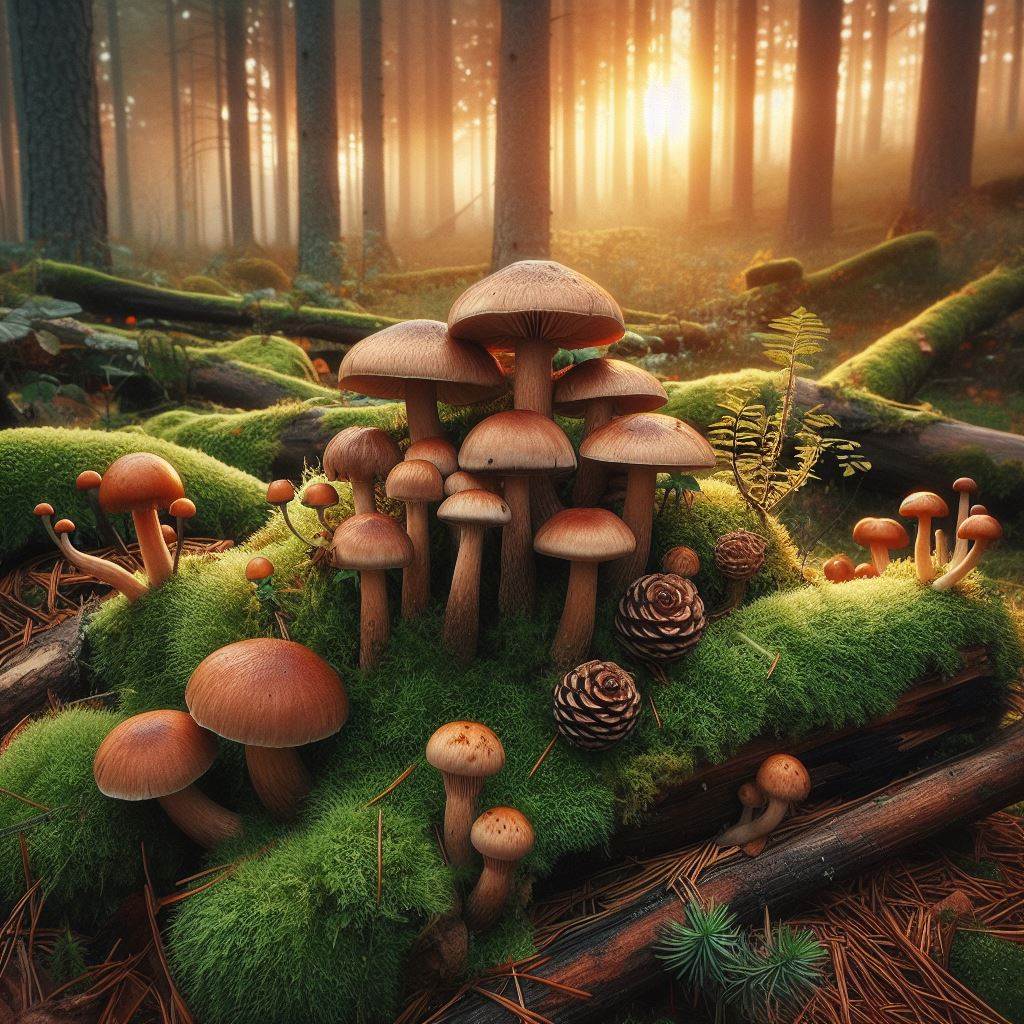
Mushrooms in Oklahoma: Beginner’s Guide to Safe Foraging
Table of Contents
Types of Mushrooms in Oklahoma
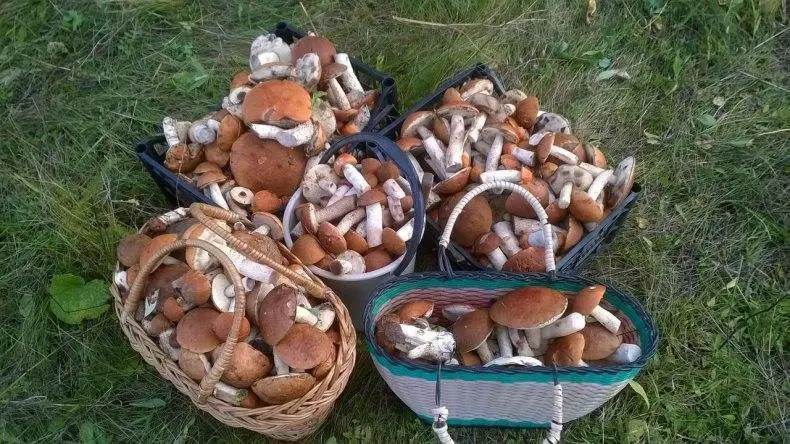
Mushrooms are classified into four main categories based on their effects and uses: edible, poisonous, medicinal, and psychedelic. Each category has its own characteristics, examples, and identification tips. Let’s take a look at each one in more detail.
Edible Mushrooms in Oklahoma
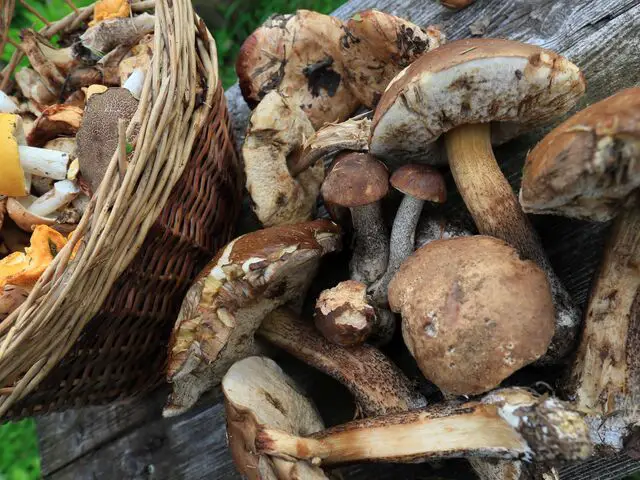
Edible mushrooms offer a delightful blend of taste and texture, enhancing dishes with their unique flavors and nutritional value. Oklahoma boasts a variety of these culinary treasures, including:
- Morels: With their distinctive honeycomb-like cap and rich, nutty flavor, morels are a sought-after delicacy. They thrive in spring, near decaying trees like elms, ashes, and cottonwoods.
- Chanterelles: Sporting funnel-shaped caps and a fruity, peppery taste, chanterelles are a culinary gem found in summer and fall, particularly under oak and hickory trees.
- Oysters: Recognizable by their fan-shaped caps and mild, sweet flavor, oyster mushrooms are abundant in fall and winter, often on dead hardwood trees such as maples and poplars.
- Shiitakes: These cultivated mushrooms feature a meaty, smoky taste and are best enjoyed in spring and fall. Look for them on hardwood logs, particularly oaks and beeches.
When harvesting edible mushrooms, equip yourself with a sharp knife, a basket, and a brush. Cut them at the stem base, leaving some mycelium in the ground. Avoid plastic bags to allow air circulation and prevent spoilage. Brush off dirt and debris, refraining from washing to maintain flavor. Store them in a cool, dry place or refrigerate for up to a week. Prior to consumption, ensure thorough cooking to neutralize any potential toxins or allergens. Happy foraging and bon appétit! Discover the variety of Edible Mushrooms In Michigan.
Poisonous Mushrooms in Oklahoma
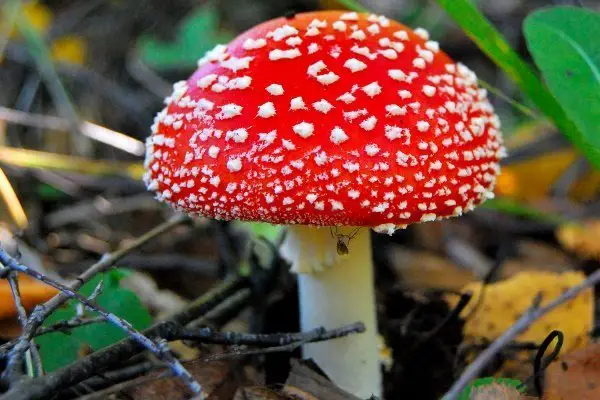
In Oklahoma, some mushrooms pose serious health risks due to their toxicity. Among the most dangerous are:
- Amanitas: This group includes lethal varieties like the death cap, the destroying angel, and the fly agaric. Identified by their white gills, white stem with a ring, and bulbous base, they may have caps in various colors. Consumption can lead to symptoms ranging from nausea to coma and death. Amanitas thrive in woodlands, particularly under pines, birches, and oaks during summer and fall.
- False Morels: Resembling edible morels but with wrinkled or saddle-shaped caps and hollow stems, false morels are poisonous. Symptoms of ingestion may include headache, nausea, and muscle cramps. They appear in spring under conifers, aspens, and willows.
- Galerinas: These mushrooms resemble honey mushrooms but are toxic. Featuring convex caps and fragile stems, they may cause symptoms similar to those of amanitas. Galerinas are found in fall and winter on decaying wood, notably conifers, birches, and alders.
When encountering poisonous mushrooms, refrain from touching or consuming them. Seek immediate medical attention if ingestion is suspected. Avoid inducing vomiting, as it may exacerbate the condition. Providing a mushroom sample or photo can aid in identification and treatment. Remember, reliable sources and expert guidance are essential for safe foraging practices.
Medicinal Mushrooms in Oklahoma
In Oklahoma, certain mushrooms offer therapeutic benefits, harnessing properties that can address various ailments. Here are some notable examples:
- Reishi: Recognized by their kidney or fan-shaped caps and woody stems, Reishi mushrooms come in hues like red, black, purple, or yellow. With a bitter and earthy flavor, they’re often consumed as tea, extracts, or powder. Reishi, also known as the “mushroom of immortality,” can promote overall health and longevity, aiding in stress relief, fatigue, allergies, and potentially even cancer.
- Turkey Tail: Featuring bracket-shaped caps and a tough texture, Turkey Tail mushrooms exhibit colors ranging from brown to green. Their bland or bitter taste makes them suitable for consumption as tea, extracts, or powder. Known as the “mushroom of life,” Turkey Tail mushrooms boost the immune system and combat illnesses like colds, flu, inflammation, and cancer.
- Lion’s Mane: Lion’s Mane mushrooms boast spherical or oval caps with a hairy or toothed surface, often in shades of white, cream, or yellow. With a sweet and seafood-like flavor, they’re consumed as food, tea, extracts, or powder. Dubbed the “mushroom of the mind,” Lion’s Mane stimulates nerve cell growth and brain tissue repair, aiding in memory, cognition, mood, and neurodegenerative diseases.
Before incorporating medicinal mushrooms into your regimen, consult your doctor, especially if you have underlying health conditions or are on medication. Remember, mushrooms should complement a balanced diet and lifestyle, not replace them. Consistency and patience are key, and opting for high-quality, organic mushrooms ensures potency and purity.
Understand Why Are Mushrooms Important To The Food Chain.
Psychedelic Mushrooms in Oklahoma
In Oklahoma, certain mushrooms contain psilocybin, offering experiences of altered consciousness and perception. Here are notable varieties:
- Liberty Caps: Recognizable by their conical or bell-shaped caps and slender stems, Liberty Caps come in shades of brown, yellow, or green. They have a bitter, metallic taste and are typically consumed raw, dried, or brewed as tea. Known as the “mushroom of freedom,” Liberty Caps can evoke feelings of liberation, joy, and wonder, aiding in creativity, introspection, and spirituality.
- Cubensis: Featuring convex or flat caps and thick, fleshy stems, Cubensis mushrooms may have golden, brown, or white caps. With a mild or sour taste, they’re consumed raw, dried, or cooked. Referred to as the “mushroom of the gods,” Cubensis can induce a sense of divinity, awe, and connection, assisting in learning, problem-solving, and empathy.
- Azurescens: Azurescens mushrooms sport wavy or convex caps and slender, fragile stems, often in blue, purple, or brown hues. They have a bitter, spicy taste and are consumed raw, dried, or brewed as tea. Known as the “mushroom of the sky,” Azurescens can induce feelings of transcendence, ecstasy, and flight, fostering imagination, inspiration, and vision.
When using psychedelic mushrooms, conduct thorough research and prepare mentally and physically. Avoid use if you have a history of mental illness, are pregnant or breastfeeding, or are on medication. Always have a trusted, sober friend present for guidance and support. Choose a comfortable, safe setting for the experience and practice moderation and respect. Opt for organic, fresh mushrooms or grow your own for quality and potency.
Best Time & Places to Find Mushrooms in Oklahoma
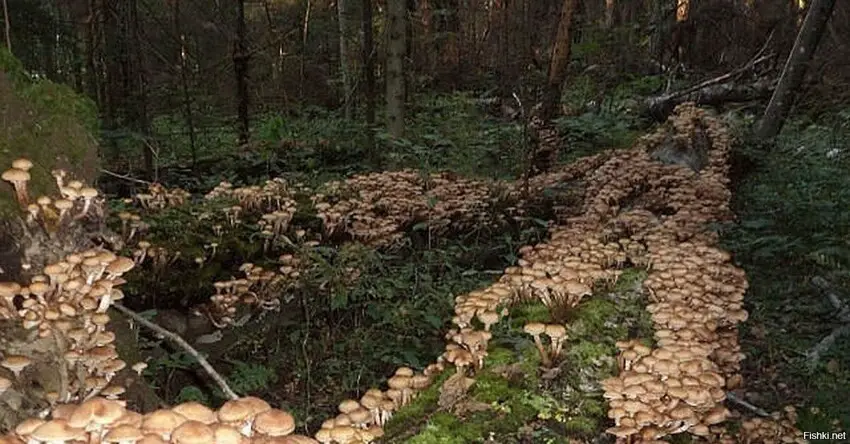
Mushrooms are not always easy to find, as they depend on various factors, such as the climate, the terrain, the season, and the weather. However, there are some general tips and guidelines that can help you locate and collect mushrooms in Oklahoma. Here are some of the best places and times to find mushrooms in Oklahoma, based on their habitat and growth cycle.
Forests in Oklahoma
Forests stand as prime locations for mushroom enthusiasts, offering optimal conditions like shade, moisture, and organic material for mushroom growth. Oklahoma boasts diverse forest types oak, pine, and mixed which harbor a variety of mushrooms. Here are some forest-dwelling mushrooms:
- Boletes: Identified by their cap pores and solid stems, Boletes come in shades of brown, red, or yellow. With a meaty, nutty flavor, they’re often enjoyed as food, tea, or powder. Found in summer and fall, they thrive in oak, pine, and mixed forests, usually beneath or near trees.
- Russulas: Featuring brittle gills and stout stems, Russulas display caps in hues of red, purple, or green. Their flavor ranges from mild to peppery, and they’re commonly consumed as food, tea, or extract. Summer and fall see their emergence in oak, pine, and mixed forests.
- Polypores: These mushrooms sport bracket-shaped caps with pores and a tough texture, with colors varying from brown to white or black. Offering a bland or bitter taste, they’re often used as tea, extract, or powder. Polypores thrive in fall and winter, primarily on dead or living hardwood trees like oaks, birches, and maples.
When exploring forest habitats for mushrooms, prioritize safety by wearing suitable clothing and footwear to guard against insects and hazards like poison ivy. Equip yourself with navigation tools, a magnifying glass, a knife, and a basket, and bring along a field guide for identification assistance. Respect the forest and its inhabitants by refraining from littering or causing damage.
Are interesting to Discover the Best Places for Morel Hunting.
Fields in Oklahoma: Mushroom Hunting Grounds
Fields offer ample sunlight, moisture, and nutrients, making them fruitful grounds for mushroom seekers. Oklahoma’s varied landscape includes grasslands, pastures, and crop fields, each harboring a diverse array of mushrooms. Here are some field-dwelling mushrooms to look out for:
- Puffballs: Sporting spherical or oval shapes with a soft, spongy texture, Puffballs come in white, brown, or gray hues. With a mild, cheesy flavor, they’re commonly enjoyed as food, tea, or powder. Found in summer and fall, Puffballs thrive in grasslands, pastures, and crop fields, particularly in open and disturbed areas.
- Agarics: These mushrooms feature caps with gills and thin, fragile stems, often in white, brown, or gray tones. Offering a mild, sweet, or sour taste, they’re typically consumed as food, tea, or extract. Agarics emerge in summer and fall, favoring grasslands, pastures, and crop fields, especially in manured or fertilized areas.
- Coprinoids: Coprinoids boast caps with gills that turn black and dissolve into ink as they mature, ranging in colors from white to black. With a mild, bitter flavor, they’re used as food, tea, or extract. Found in fall and winter, Coprinoids thrive in grasslands, pastures, and crop fields, particularly in dung or compost piles.
When exploring fields for mushrooms, protect yourself from the sun and heat with a hat, sunglasses, and sunscreen, and stay hydrated with plenty of water and snacks. Carry a first aid kit for emergencies and bring along a camera, notebook, and pen to document your discoveries. Respect landowners and avoid trespassing, theft, or damage to property.
Parks and Gardens in Oklahoma
Parks and gardens offer a blend of natural and man-made environments conducive to mushroom growth. Oklahoma boasts various types—urban, suburban, and rural—each hosting its own mushroom varieties. Here are some mushrooms you might encounter:
- Ink Caps: Characterized by bell-shaped or conical caps and thin, hollow stems, Ink Caps come in white, gray, or black hues. With a mild, sour, or inky flavor, they’re commonly consumed as food, tea, or extract. Found in spring and fall, Ink Caps thrive in urban, suburban, and rural parks and gardens, especially in lawns, flower beds, and mulch piles.
- Parasols: Parasols feature large, umbrella-like caps and long, slender stems, typically in white, brown, or gray colors. With a nutty, lemony, or mushroomy flavor, they’re enjoyed as food, tea, or extract. Summer and fall see their emergence in parks and gardens, particularly in grassy or sandy areas.
- Fairy Rings: These mushrooms grow in circular or arc-shaped patterns on the ground, displaying various shapes, sizes, colors, and flavors. Consumed as food, tea, or extract, Fairy Rings appear in spring and fall in urban, suburban, and rural parks and gardens, notably in lawns, meadows, and golf courses.
When hunting for mushrooms in parks and gardens, stay aware of your surroundings and the presence of others. Consider bringing a companion, a dog, or pepper spray for company or protection. Carry a bag, trowel, and permission for collecting mushrooms, and adhere to park rules to maintain respect for the environment.
A comprehensive guide on Polish Mushroom Picking.
Perfect Seasons & Weather for Mushroom hunting in Oklahoma

Mushrooms’ growth and availability are influenced by both location and time, particularly by seasons and weather conditions which affect temperature, humidity, and rainfall. Understanding these factors can aid in predicting and preparing for mushroom hunting. Here’s a condensed guide for the best seasons and weather conditions in Oklahoma:
- Spring: Mild temperatures, high humidity, and frequent rainfall make spring ideal for mushroom growth. Look out for morels, false morels, oysters, and shiitakes.
- Summer: Hot and dry conditions challenge mushroom growth, but some species like chanterelles, boletes, and agarics can adapt and thrive.
- Fall: Cool temperatures, moderate humidity, and abundant rainfall peak mushroom growth. Expect puffballs, ink caps, parasols, and fairy rings.
- Winter: Cold and snowy conditions make mushroom hunting tough, but polypores, galerinas, and coprinoids can persist.
Check weather forecasts and mushroom reports for ideal hunting days, aiming for warm, wet, and cloudy conditions. Avoid hot, dry, or windy days, and target areas recently exposed to rain. Stay flexible, as weather and mushroom availability can change rapidly.
Safe & Ethical Mushroom Foraging in Oklahoma
Mushroom foraging is not only a fun and rewarding hobby, but also a responsibility and a privilege. As mushroom foragers, we have to respect and protect the mushrooms, the environment, and the community. There are some important aspects of safety and ethics that mushroom foragers should follow, such as identification, permission, conservation, and respect. Let’s review each one in more detail.
- Identification: Accurate identification is paramount. Rely on trusted resources like books, apps, websites, and expert advice. Never solely trust superficial features.
- Permission: Respect property rights. Always seek permission before foraging on private or public land. Be polite, honest, and grateful in your requests.
- Conservation: Forage sustainably. Pick selectively, leave some mushrooms behind, and avoid damaging the environment.
- Respect: Share knowledge, help others, and appreciate nature. Treat fellow foragers, wildlife, and the environment with kindness and humility.
Conclusion
Mushrooms, fascinating and mysterious, offer both benefits and risks. Oklahoma, with its diverse landscape, provides ample opportunities for mushroom hunting, albeit with rules and responsibilities. Combining these elements yields a rewarding hobby alongside a sense of privilege.
This article has covered types of Mushrooms In Oklahoma, prime hunting spots and seasons, and the safety and ethics of foraging. We hope it’s inspired responsible exploration of Oklahoma’s mushrooms, fostering a deeper connection with nature and fellow enthusiasts.
For further immersion:
- Join local mushroom clubs like the Oklahoma Mycological Society, Tulsa Mycological Society, or Oklahoma City Mycological Society. Participate in events and activities, connecting with fellow enthusiasts.
- Attend mushroom festivals such as the Morel Mushroom Festival in Jay, Mushroom Festival in Tishomingo, or Mushroom Festival in Sulphur. Enjoy exhibits, workshops, and tastings.
- Explore mushroom stores like Oklahoma Mushroom Company in Tulsa, Mushroom Man in Oklahoma City, or Mushroom Farm in Norman. Purchase fresh, dried, or canned mushrooms, extracts, or kits.
We hope you’ve found this article enjoyable and wish you happy foraging in Oklahoma!